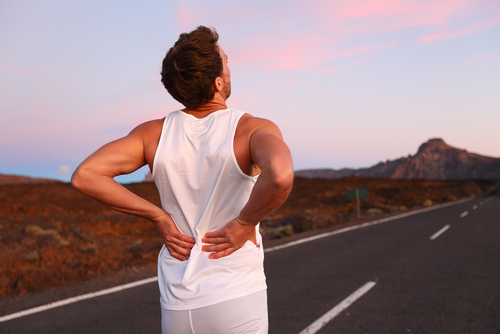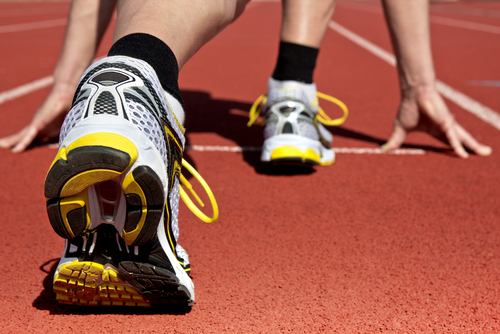 Back issues can result from all manner of activity and inactivity. While some runners experience lower back pain, it may more often be a result of sitting hunched in front of a computer screen all day than from that 5 miles you ran before work.
Back issues can result from all manner of activity and inactivity. While some runners experience lower back pain, it may more often be a result of sitting hunched in front of a computer screen all day than from that 5 miles you ran before work.
In fact, research published in the journal Spine, which surveyed 937 former elite athletes from different sports and 620 control participants, discovered that lower back pain was actually less of a problem for athletes than the general population. When the researchers honed in on runners in particular, they didn’t find any correlation between lower back pain and higher training mileage.
While those results are comforting for runners who don’t currently have issues with back pain, there are still plenty of harriers out there who struggle with this issue. The pain generally materializes as an ache in the lower back muscles before, during or after running. While the culprit of this ailment isn’t always running related, there are a number of potential links.
“Oftentimes it is an overuse issue due to a lack of hip mobility and inappropriate core stability,” explains Jim Beversdorf, a licensed athletic trainer. “Core is a very generalized and often overused term by many today, so to get to the root issue takes an in-depth understanding of what needs to be corrected with regards to stabilization of the core.”
 One of the main trouble areas of the core that may be a partial cause of lower back pain: the hips. In particular, research has shown that runners often lack hip mobility, meaning they are less flexible in this area. Many experts believe that, along with tight hamstrings, the pelvis can end up rotated too far forward or backward, thereby placing undue strain on the spine.
One of the main trouble areas of the core that may be a partial cause of lower back pain: the hips. In particular, research has shown that runners often lack hip mobility, meaning they are less flexible in this area. Many experts believe that, along with tight hamstrings, the pelvis can end up rotated too far forward or backward, thereby placing undue strain on the spine.
Poor form, which can be correlated to decreased hip mobility in some cases, can also be one of the root causes of lower back pain in runners. If you suspect this may be your problem, Beversdorf suggests going to see an expert.
“Educating a runner on proper form and, more importantly, teaching them the corrective exercises that influence their form, is the important part,” Beversdorf says. “Simply telling someone to change [his or her] posture isn’t going to do it for most runners; their current posture position has been trained for long periods of time, and it takes specific corrective techniques to positively improve posture.” He also points out that there’s no one-size-fits-all prescription to solving lower back pain. While one person may demonstrate poor flexibility, another might have a muscular imbalance, and another may need simply to focus on form. “To appropriately provide a runner with the stretches and strengthening [to help correct the condition], an in-depth assessment must be performed to determine which areas need to be addressed,” Beversdorf adds.
In addition to visiting a medical professional with experience in gait analysis, simply backing off of your mileage may help alleviate the problem. The forward lean and increased arm drive required of uphill running can be particularly problematic if you’re already experiencing an issue, so skipping hill workouts until the pain subsides often helps speed recovery.
 Other solutions your clinician may suggest are orthotics or insoles for your running shoes. For some runners, greater support at the bottom of the kinetic chain can have an effect on the middle of it. Issues that appear to be insignificant, like overpronation, often create poor movement patterns at the hip. Since there are a wide variety of insoles on the market, be sure to consult your doctor about which ones might make a difference for you.
Other solutions your clinician may suggest are orthotics or insoles for your running shoes. For some runners, greater support at the bottom of the kinetic chain can have an effect on the middle of it. Issues that appear to be insignificant, like overpronation, often create poor movement patterns at the hip. Since there are a wide variety of insoles on the market, be sure to consult your doctor about which ones might make a difference for you.
What’s more, simply switching to a different shoe model can also offer positive results for many runners. Everything from arch support to cushioning to heel-to-toe angles can affect the way the body functions over many miles. Take your old shoes into your local running specialty shop and have a shoe expert take a look at the wear pattern and the way you run on a treadmill. He or she can give you advice on the best type of shoe for your biomechanics and training goals.
Source: www.active.com; Mackenzie Lobby; July, 2014.







